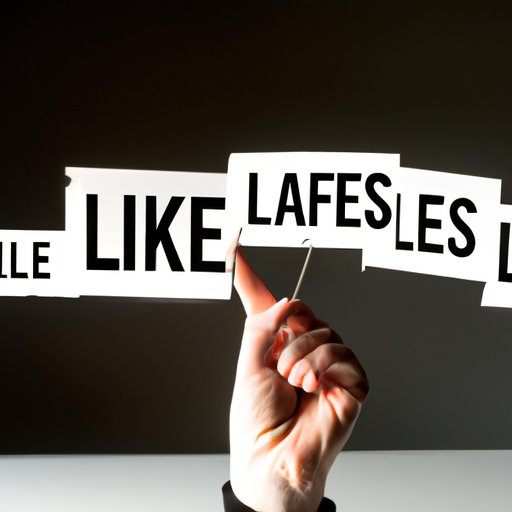Introduction
The phrase “a lie can travel halfway around the world before the truth has a chance to put its pants on” is attributed to Mark Twain, and it speaks to the power of lies to spread quickly and widely. In the modern age, with the advent of social media and other technologies, falsehoods can travel even faster than ever before. This article will explore the implications of this phenomenon, examining how lies can travel halfway around the world and the impact that technology has had on the rate at which they spread.

Examining the Impact of Social Media on How Quickly Lies Can Spread
Social media has become an integral part of our lives, and it has greatly impacted how quickly lies can travel. According to a report by the Pew Research Center, “the average American adult spends nearly two hours per day on social networking sites and messaging apps.” This creates an environment where rumors and false information can be easily disseminated and amplified. Furthermore, research has shown that people are more likely to believe false information if it comes from someone they know or trust, creating a dangerous feedback loop of misinformation.
A study conducted by researchers at Ohio State University found that people were more likely to accept false information as true if it was shared by someone they knew. The study also found that people were less likely to question the accuracy of a statement if they believed the source to be credible. This suggests that social media can be used to manipulate people into believing false information.

Investigating the Psychology Behind Why People Believe Falsehoods
The tendency to believe false information can be attributed to cognitive biases. For example, confirmation bias is the tendency to seek out information that confirms one’s existing beliefs. This can lead people to accept false information as true if it aligns with their preexisting views. Furthermore, people are more likely to believe something if it is repeated often enough, even if it is false. This is known as the “illusion of truth” effect.
Another factor that contributes to the spread of lies is the human desire for certainty. People want to feel like they have all the answers, so they may be more likely to accept false information as true if it provides them with a sense of certainty. Additionally, people are more likely to believe something if it appeals to their emotions, such as fear or anger. These psychological factors can cause people to accept false information as truth without critically examining it.

Comparing Traditional and Modern Methods of Propagating Lies
Throughout history, lies have been used to manipulate people and propagate false information. One of the most famous examples of this is the Trojan Horse story from Homer’s Iliad, which tells of how the Greeks tricked the Trojans into believing that a giant wooden horse was a gift. This story was used to spread the idea of Greek superiority throughout the region, and it traveled great distances to do so.
In comparison, modern methods of propagating lies are much faster and more efficient. Social media allows falsehoods to reach millions of people in a matter of minutes, and automated bots can be used to amplify false information even further. Additionally, the use of targeted advertising allows lies to be tailored to specific audiences, making them more likely to be accepted as true.
Analyzing the Role of Technology in Amplifying Lies
Technology has allowed lies to travel faster than ever before, and this has serious implications. False information can be used to manipulate people and influence public opinion, and it can have real-world consequences. For example, a study by Oxford University found that false information spread via social media during the 2016 US presidential election had a significant impact on voter behavior. This suggests that unchecked lies and disinformation can have a major impact on society.
Furthermore, the proliferation of false information can lead to a breakdown in trust. People may become less likely to believe anything they hear, leading to a general distrust of news and information. This can create an environment where it is difficult to distinguish between fact and fiction, making it harder to make informed decisions.
Conclusion
In conclusion, this article has explored how lies can travel halfway around the world in the modern age. It has examined the impact of social media and technology on the propagation of false information, as well as the psychology behind why people believe falsehoods. It has also compared traditional and modern methods of spreading lies, and analyzed the role of technology in amplifying them. Ultimately, unchecked lies and disinformation can have serious consequences, and it is important to take steps to address the problem.
(Note: Is this article not meeting your expectations? Do you have knowledge or insights to share? Unlock new opportunities and expand your reach by joining our authors team. Click Registration to join us and share your expertise with our readers.)
